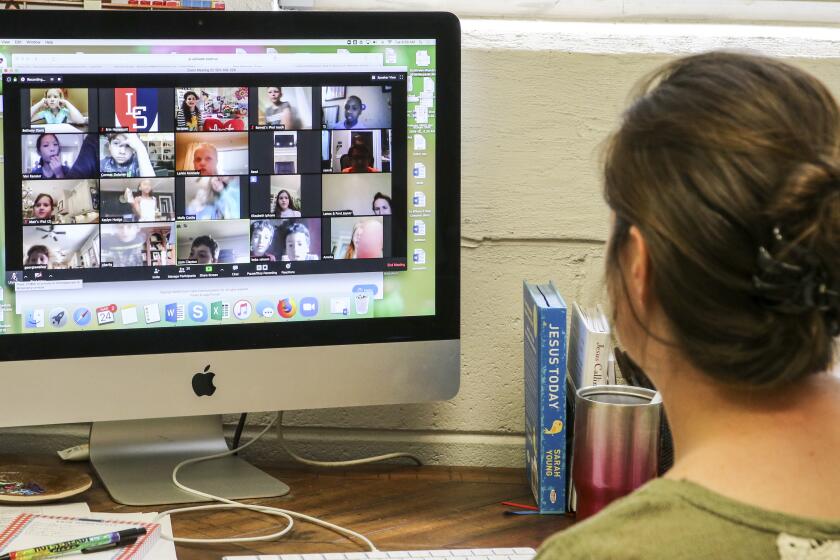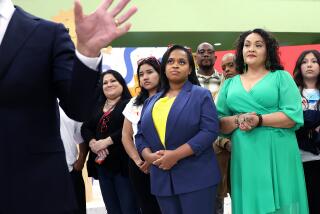Claremont high school football team ‘Zoombombed’ during online practice

- Share via
The first day of spring football practice at Claremont High School — held via the Zoom video-conferencing platform — was interrupted Tuesday when an unknown user bombarded the group with inappropriate images.
Varsity coach Shane Hile posted about the incident on social media to warn other coaches about the pitfalls of using Zoom, which has skyrocketed in popularity as millions turn to online conferencing in an attempt to stay connected during the coronavirus pandemic.
Zoom and other video conferencing technology is being used by high school coaches to keep in touch with team members and each other.
“Coaches please be careful when using Zoom,” he wrote on Twitter. “Today we had our first spring practice using Zoom and we were Zoom bombed. Unfortunately our players and staff saw some inappropriate images.”
Hile could not immediately be reached for comment Wednesday morning.
As more school districts and colleges turn to Zoom classrooms as a substitute for in-person classes and sports practices, internet trolls have seized a new space to disrupt and spread offensive material. So-called Zoombombing has upended online learning, public meetings and social happy hours with hateful images and other vulgar content displayed through screen sharing.
Public schools in Los Angeles have already been hit with attacks during online lectures. At USC, top administrators issued an apology to the school community last month after some virtual lectures fell prey to people crashing in with “racist and vile language.”
A City Council meeting in Laguna Beach was interrupted last month when a viewer began drawing pornographic sketches coupled with profane words on Zoom’s “whiteboard” feature that allows users to annotate on a shared screen. The viewer began streaming pornography before city officials ended the call. The meeting login information had been posted on the city website days earlier, allowing public access.
Zoom, the videoconferencing service that has exploded into the vacuum created by the COVID-19 outbreak, has endured the revelation of a string of privacy and security flaws in recent weeks. How safe is it to use the platform?
A Zoom spokesperson said in a recent statement to the Los Angeles Times that the company took “the security of Zoom meetings seriously, and we are deeply upset to hear about the incidents involving this type of attack.”
In a blog post titled “How to Keep Uninvited Guests Out of Your Zoom Event,” company representatives offered tips on how to adjust security settings to avoid Zoombombing. They recommend that meeting hosts change their account settings to disable the screen-sharing option for everyone but the host. Meeting hosts also can mute participants and set up passwords that prevent uninvited users from joining.
The company also suggests meeting links not be posted on social media or other public forums. For meetings that must be public, the platform has a waiting room feature that requires the host to approve entry to participants one by one, according to the company.
Times staff writers Rosanna Xia, Howard Blume and Luke Money contributed to this report
More to Read
Sign up for Essential California
The most important California stories and recommendations in your inbox every morning.
You may occasionally receive promotional content from the Los Angeles Times.













